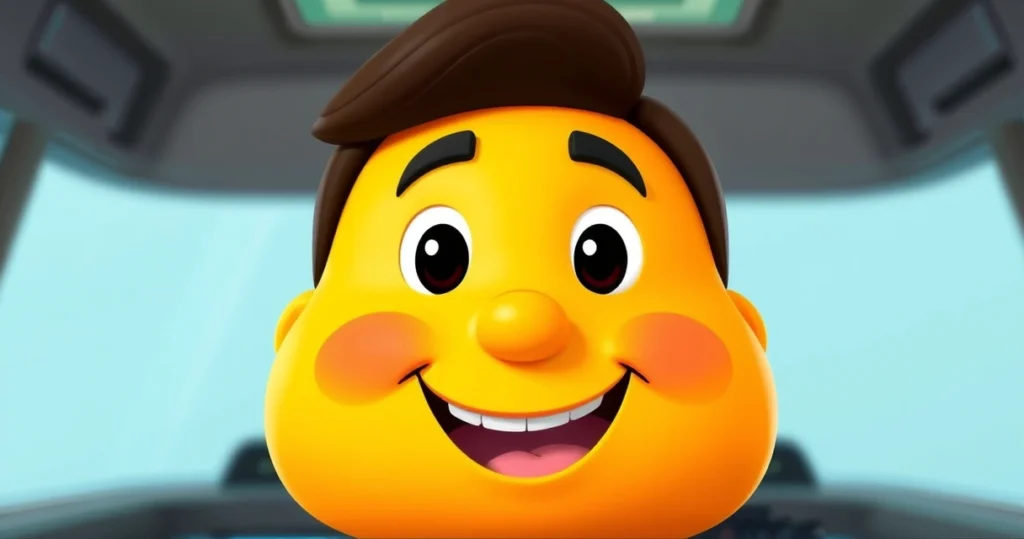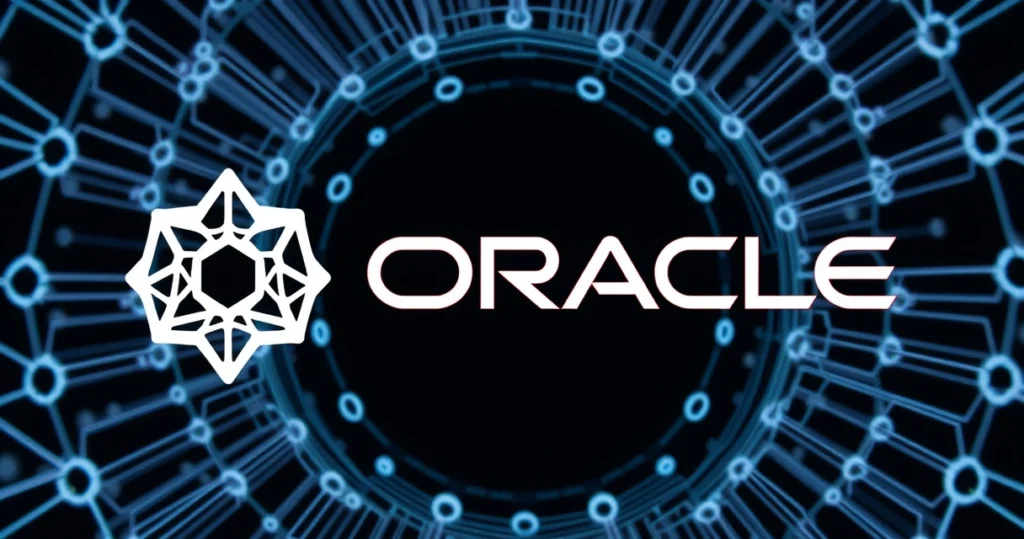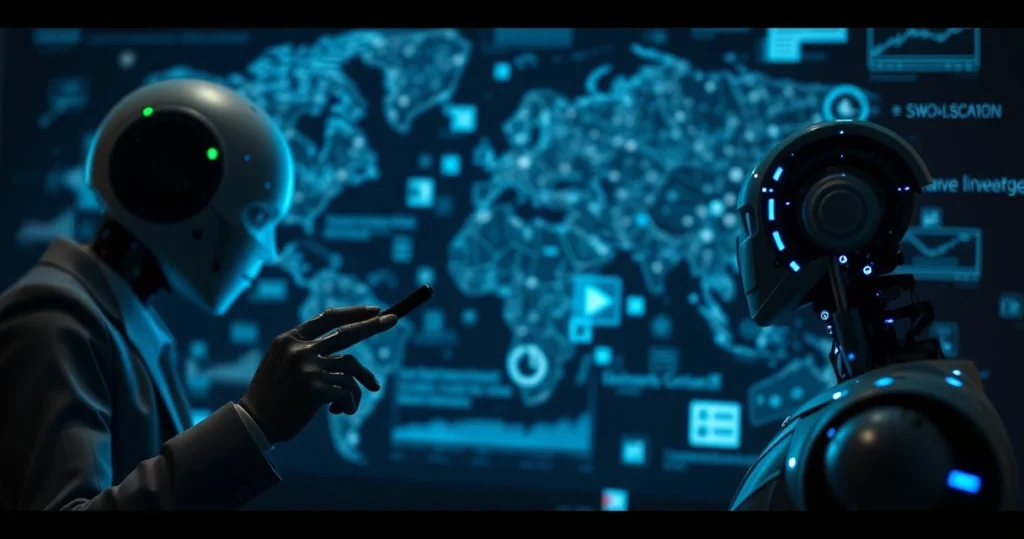In an ever-evolving digital landscape, user engagement remains a top priority for tech giants. Microsoft has taken a significant leap forward by integrating a friendly animated face into its Copilot service, designed to enhance interaction and make AI communications more relatable. This new feature not only aims to improve user experience but also introduces a layer of emotional connection between users and technology.

As artificial intelligence continues to permeate our daily lives, the need for a more human-like interaction becomes increasingly crucial. By employing animations that express emotions like smiles and surprise, Microsoft is setting a new standard for AI engagement. This article explores the implications of these features, their potential impact on user engagement, and the overall advancements in AI emotions through Microsoft Copilot.
The Role of AI in Enhancing User Engagement
AI has transformed how we interact with technology, offering personalized experiences and efficient solutions. However, the challenge remains: how can we make these interactions feel more human? This is where Microsoft Copilot’s animated face comes into play. By introducing an animated avatar that can express emotions, Microsoft is addressing a significant gap in traditional AI interfaces.
Understanding User Engagement
User engagement is a metric that reflects how users interact with a product or service. It encompasses various aspects, including the frequency of use, duration of sessions, and overall satisfaction. In the context of Microsoft Copilot, enhancing user engagement means creating an environment where users feel comfortable and motivated to interact with the AI.
AI Emotions: The Next Frontier
The integration of emotional intelligence into AI is a burgeoning field. Emotions play a critical role in human interactions, influencing decisions and fostering connections. By allowing Copilot to express emotions, Microsoft is exploring how these cues can enhance the user experience.
Features of the Animated Face in Microsoft Copilot
The animated face of Microsoft Copilot is more than just a visual enhancement; it is a thoughtfully designed feature aimed at improving user interaction. Here are some of the key features:
- Dynamic Expressions: The animated face can display a variety of emotions, including happiness, surprise, and curiosity, making conversations more engaging.
- Contextual Reactions: The avatar reacts based on the context of the conversation, providing users with feedback that feels natural and intuitive.
- Interactive Features: Users can interact with the animated face, allowing for a more hands-on approach to engagement.
- Customization Options: Future updates may allow users to customize the avatar, making the experience more personal.
Benefits of Using an Animated Face in AI
Incorporating an animated face into Microsoft Copilot offers numerous benefits that can significantly enhance user engagement. Here are some of the most notable advantages:
1. Improved Emotional Connection
When users can see an expression of emotion, it fosters a sense of connection. This emotional engagement can lead to increased satisfaction and loyalty to the service.
2. Enhanced Communication
Non-verbal cues play a vital role in human communication. By integrating these cues into AI interactions, Microsoft Copilot can facilitate clearer and more effective communication.
3. Increased User Retention
Users are more likely to return to a service that they find engaging and enjoyable. The animated face enhances the overall experience, making users more likely to continue using the platform.
4. Encouragement of User Feedback
With a more engaging interface, users may feel more inclined to provide feedback, which can be invaluable for future improvements and updates.
Challenges and Considerations
While the introduction of an animated face in Microsoft Copilot is promising, it does come with challenges and considerations that must be addressed:
1. User Preferences
Not all users may appreciate animated features. Some may prefer a more straightforward interface without distractions. Understanding user preferences is crucial for successful implementation.
2. Cultural Sensitivity
Emotions can be interpreted differently across cultures. Microsoft must ensure that the animated face resonates positively with a diverse user base.
3. Technology Limitations
The effectiveness of the animated face is dependent on the underlying technology. Ensuring smooth animations and accurate emotional expressions is essential for user satisfaction.
Future Prospects for Microsoft Copilot
The introduction of an animated face is just the beginning for Microsoft Copilot. As technology continues to evolve, we can expect further enhancements that build on this foundation. Some potential future prospects include:
- More Advanced Emotional Recognition: Future iterations may include AI that can recognize and respond to user emotions in real-time.
- Broader Customization Features: Users may have the ability to choose different avatars or customize their expressions based on personal preferences.
- Integration with Other Applications: Microsoft could expand this feature to other platforms, creating a cohesive user experience across its software ecosystem.
Frequently Asked Questions (FAQ)
1. What is Microsoft Copilot?
Microsoft Copilot is an AI-powered assistant designed to enhance productivity and user engagement through interactive features and personalized experiences.
2. How does the animated face improve user engagement?
The animated face expresses emotions, making interactions feel more relatable and human-like, which can enhance user satisfaction and retention.
3. Are there any customization options for the animated face?
While customization options are not fully available yet, future updates may allow users to personalize their animated avatars.
4. What challenges does Microsoft face with this new feature?
Challenges include catering to diverse user preferences, ensuring cultural sensitivity, and overcoming technological limitations for smooth interactions.
5. What are the future prospects for Microsoft Copilot?
Potential future developments include advanced emotional recognition, broader customization features, and integration with other Microsoft applications.
Conclusion
Microsoft’s introduction of a friendly animated face in Copilot marks a significant development in the realm of user engagement. By focusing on AI emotions and interactive features, Microsoft is not only enhancing the user experience but also paving the way for a more human-like interaction with technology. As AI continues to evolve, the implications of such advancements will be critical in shaping how users connect with digital platforms. The journey towards a more engaging and emotionally aware AI is just beginning, and Microsoft is leading the charge.
📰 Original Source
Este artigo foi baseado em informações de: https://tecnoblog.net/noticias/microsoft-testa-rostinho-amigavel-no-copilot/



